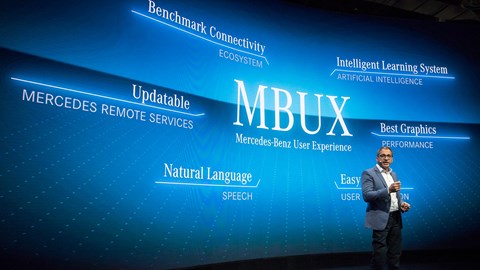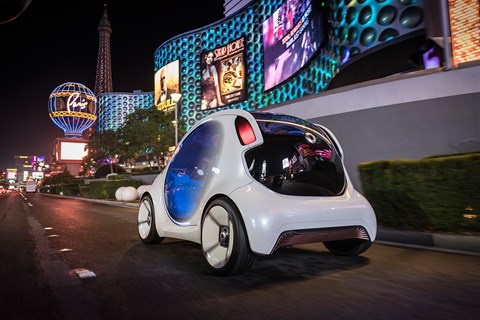► Our relationship with cars
► Going driverless changes everything
► MBUX is just the start of a revolution
Hey Mercedes! It seems puerile – don’t you think? – to slip behind the wheel of a car wearing the three-pointed star, probably still the most distinguished badge in motoring, and say ‘Hi’ to your Mercedes-Benz.
Does Lewis Hamilton salute his F1 W09 racer with ‘Hey Mercedes’? Did Moss have a natter with his 300 SLR before the ’55 Mille Miglia? I have owned five sturdy Benz estates – a breed of car I like – and I have never spoken to any of them. We have happily communicated by touch, not speech.
Yet that is the greeting that unlocks voice-activated wonders in the new A-Class. With its clever multimedia interface, the new A may just be as significant in the long-term development of the car as the Mercedes 260D (the first production diesel car), the W116 S-Class (the first car with electronic ABS), the 300 SL (pioneered direct petrol injection), or any other innovative Benz.
‘Hey Mercedes’ activates the company’s new step-ahead infotainment system. It’s like an advanced car equivalent of Amazon’s Alexa or Apple’s Siri. Just as impressive, it’s offered not on Mercedes’ top models but, rather, makes its debut on its cheapest: it’s standard on the new A-Class. The Benz top brass clearly think younger A-Classers will appreciate these artificial intelligent niceties more than old geezers who ride in S-Classe. (It’ll ‘filter up’ to other Benzes later.)
Autonomous car levels from 1-5 explained

Jump into a new A, greet your humble little hatch and you’re suddenly instructing the nav, phone, climate, lighting and audio controls. You can talk normally, not like the robot in Lost in Space or like Arnie in The Terminator. It self-learns, can communicate warnings to other cars, read-out and write your messages, and check your calendar. Soon, you’ll be able to organise car-sharing with mates. The graphics are great.
The new A is perfect for those who hate to drive and love to fiddle with their phones (so, most under-35s). It’s a giant iPhone or Samsung Galaxy on wheels. It’s connected to the world and is a semi-autonomous dullard to drive (though highly capable). This, dear reader, is probably the car of the future.
And it’s significant in another area, too: this interface previews the new relationship we’ll ‘enjoy’ with our cars.
Cars of the future will not pollute and they will drive themselves – developments thought unimaginable just a decade ago. Electric motors will mean no more tuneful twin-cam fours, smooth straight-sixes or thundering V8s. Mercedes’s electric motors will be indistinguishable, in sound and behaviour, from BMW’s or Renault’s or Ford’s.
Plus, as cars begin to drive themselves, we all become passengers. How does this affect BMW’s ‘ultimate driving machine’ ethos or Mercedes’ big-budget F1/Lewis tie-up, or Ford’s or Alfa’s or Mazda’s driver-focused philosophy?
The upshot of electric motors and autonomous drive is that cars may become commoditised – a terrifying prospect for car bosses and marketing types, obsessed with building brands and imbuing cars with character. Plus, if we’re using new-fangled ‘mobility services’, why should consumers care whether they’re being robo-chauffeuered by Mercedes, Mondeo or Mazda?
Lidar: the tech powering autonomous cars

Do you care whether you fly by Airbus or Boeing? Do you shun the MAN double-decker to Tooting, hoping the next bus will be a Volvo? Do you reject the Uber Zafira, hoping you’ll get a Prius? No, no and no again. When it comes to ‘mere’ transport, we’re nearly all brand-agnostic.
‘Hey Mercedes’ previews a new man/machine rapport. Mercedes-Benz and many other car makers believe the car’s ‘personality’ may morph from driving machine to that of friendly transport robot. The new A-Class is your friend: talk to it, ask it to call your friends or guide you to your destination. In the future, it will even drive you, autonomously.
Today’s car is still happily like a motorised horse and cart. You ride it, you’re in control. It growls and snorts and entertains with its motion and movement; it needs love and care, sympathy and skill to master. It’s more pet than appliance. The car of 2030 will be a dynamic droid, more anthropomorphic than today’s vehicles. But – and there’s the rub for you and me – it’ll be nowhere near as involving, or as rewarding, to operate.
More opinion pieces by Gavin Green